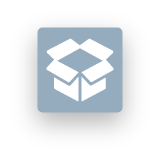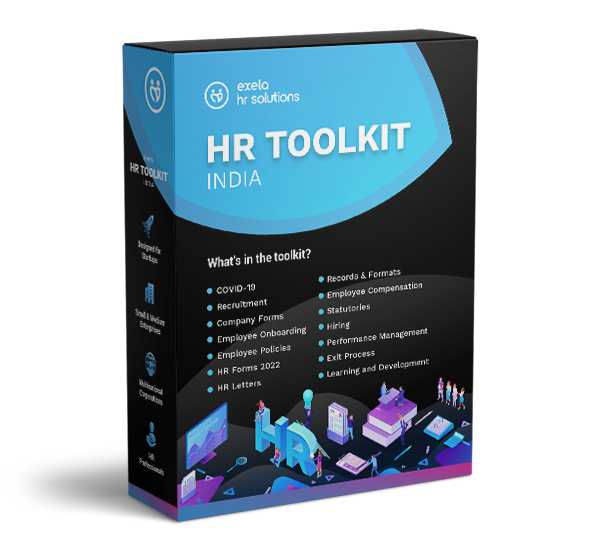
The sudden and complete shift to remote work due to the pandemic has meant that the workforce of most organizations is now widely spread out. As a result, organizations are hiring people much further away than they would have previously. This has had a direct impact on how HR departments handle payroll. In essence, payroll is the remuneration or compensation a business must pay to its employees for a set period and on a given date. The entire payroll process is, however, more complicated than you think. The process includes tracking hours worked for employees, calculating pay, and distributing payments via direct deposit or check. Organizations must also perform accounting, record-keeping, set aside funds for medical insurance, calculate taxes, adjust leaves, etc. Furthermore, technology is constantly evolving, so businesses need to keep up with the latest trends and practices in payroll.
Let's check out the top payroll technology trends that will make news this year and ensure a higher recruitment and retention rate.
Below are the top payroll trends to look out for:
- Allowing Payroll Automation:
With more and more businesses adopting automated payroll processing, manual payroll processing will soon become redundant. Automated payroll software suggests numerous benefits over traditional techniques. For example, it saves time by accelerating the payroll method, and the risk of errors is highly reduced. Automated pcvayroll software also saves money by decreasing the manpower required to manually handle payroll administration.
It also functions as an employee performance management software, allowing performance-based compensation. Automated payroll systems provide performance management features for evaluating employee job performance and monitoring their development so that you may recognize them for their efforts. Additionally, it reduces the need to keep paper files for documenting employee data and action tasks.
- The New Era of AI-driven Payroll:
Artificial intelligence (AI) is evolving businesses all over, including the payroll industry. Many companies are embracing AI-driven software to store and manage payroll data easily.
AI technology is capable of understanding from experience and carrying out human-like tasks. To leverage the power of AI, many organizations are integrating AI-powered chatbots with their websites to interact with employees and address basic and complicated questions alike. Chatbots may also direct employees to the appropriate department, enhancing employee satisfaction. We will see incredibly advanced chatbots built to answer a broader range of challenging payroll related questions in the coming years.
- Embracing Mobile Payroll Apps:
The growth of mobile payroll applications has been rising in recent years. Aside from allowing HR managers to handle payroll from anywhere globally, mobile payroll applications enable employees to view payroll data 24/7 and track their earnings from the convenience of their iOS or Android device. Furthermore, mobile payroll software provides clear payroll estimations for all employees across departments. It also automates tax calculations and reduces the risk of human errors.
- Payroll Software Integration:
Payroll management is a crucial HR activity requiring accuracy and timeliness. As a result, it is essential to pay attention to even the most minor details of each activity and combine them with payroll to obtain accurate results. For example, automating payroll integration with time and attendance systems may help save time and money while ensuring prompt salary payment and continued employee satisfaction.
Besides saving time and money, integrating payroll software with your existing systems enables the seamless transfer of attendance data to the payroll system. At the same time, it lowers both human involvement and manual errors.
- Increased Use of Cloud-based Payroll Software:
The population of payroll firms using the cloud is expanding. According to a 2021 survey, 40% of companies say they will modernize their payroll systems by 2023.
According to a Global Payroll Complexity Index report, cloud-based payroll platforms made up 61% of payroll solutions in 2020, compared to more manual methods, up by 34% in 2019. Therefore, investing in scalable cloud-based payroll software is a smarter, more modern method of optimizing payroll processes.
Payroll processing is a challenging activity controlled by a slew of laws and regulations. Cloud payroll software helps organizations comply with these requirements and manage tax compliance more easily, while mitigating risks and errors.
Also read: How to Find the Most Reliable Payroll Outsourcing Service in 2022
- Real-Time Payment Distribution on the Rise:
The most significant benefit of cloud-based payroll software is that it allows HR managers to examine or modify payroll at any time, at any location. As a result, all small and medium-sized businesses can use cloud-based payroll software because of its versatility and cost-effectiveness. Millennial employees want to be able to choose when and how they get their payments from their company. In simple words, employees nowadays expect to get paid as soon as they leave the workplace. In addition, digital wallets and email-friendly checks enable immediate satisfaction at the click of a button. Employees now prefer getting paid in real-time rather than waiting for direct deposits or traditional bi-weekly payments. Real-time payments are changing the realities of payroll. It provides instant interbank electronic payment transfer services via multiple channels, including smartphones, desktops, tablets, digital wallets, and even the web.
Payroll services must always be integrated with HRM and finance/accounting software for smooth payments or rewards and support seamless bonus management. Integrating HRM and finance software enables HR personnel to handle all employee and financial information through a single access point. However, multi-application connection is a tricky procedure, and you must choose payroll suites that can quickly connect with other existing apps in your organization. By integrating payroll services with your project management software, you can ensure your employees' efficiency and payment terms.
- Financial Wellness Programs to Improve Job Satisfaction:
Human resource managers recognize that modern employees choose to work for companies that offer a healthy work culture, retirement plans, and other perks and advantages. According to survey analysis, financial wellness initiatives increase employee security.
As a result, forward-thinking companies of all sizes collaborate with financial sector experts to develop an excellent financial wellness plan for their employees.
Organizations can significantly reduce employee financial stress and increase staff morale by implementing such financial wellness plans and programs. Introducing these programs is also an excellent method to demonstrate to employees that their organization values them.
Why Use Payroll Software?
Payroll software is the technology that assists businesses in automating operations related to employee salary payments. This solution might be a stand-alone system or an HR software suite component. Payroll software contributes to the automation of your business, data consolidation, integration, and customization, and more. Let’s check out the primary benefits listed below of how payroll management software makes life easier for businesses.
- Pay Employees Correctly:
Error-free payroll is essential for a smooth-running business. Mishandled paychecks create tension and waste time, not to mention the damage to your reputation. Payroll software helps keep things running smoothly by automatically incorporating factors like salary grade, benefits, allowances, and deductions into the wage calculation process.
- Build Transparency:
Disputes are quickly and efficiently resolved with access to timesheets, benefits, agreements, and other related data. Payroll systems can break down records to a granular level and identify the points of dispute with great accuracy, be it leaves, absences, expenses, adjustments, collective labor benefits, or other wage-related items.
- Quick Access to Employee Data:
Automating payroll helps keep track of employee data, such as contracts, Collective Bargaining Agreements (CBAs), performance records, leaves, timesheets, and conversations. Employees with the appropriate permissions can access related data from various devices or platforms. Keeping staff records in one place has a variety of benefits.
- Customize Reports:
Automated Payroll can provide customized information based on specific rules and conditions. For example, you can create reports on payslips, benefits, expenses, or historical data. In addition, recurring reports can be generated quickly and scheduled with smart and customizable alerts.
- Added Security:
Today's cloud-based payroll solutions make it easy for you to handle payroll internally. Employee data on payroll management software is protected and accessible only to you and other authorized staff.
Question to ask when selecting a payroll software solution
When you're willing to invest in a payroll system, be certain to seek the following information
- Does the system support every region that your staff is placed in?
Look for providers that offer direct support in each region or have partnerships in place to provide support. In addition, automated payroll systems are crucial for reducing administrative tasks, so you don't want to worry about running payroll manually in any region, now or in the future.
- Does the payroll software integrate with your other core business systems?
It must integrate well with your time and labor management, compensation, financial management, and other business systems.
- Is the software easy to configure?
You don’t want to modify your payroll provider frequently, so make sure you have the flexibility to scale and adapt over time as your business grows and changes. In addition, make sure the software can be configured efficiently, without the requirement for coding or IT involvement.
- Is the software truly easy to use?
It's important to make sure that employees can make changes easily, like updating their bank information or adding dependents, without help from HR. Check the software's built-in features and guidance for new employees to ensure that everything is easy to use.
Finally, to stay ahead of the competition, it is important to be aware of the latest payroll trends. This blog outlines the latest trends and uses that are important in 2022. By staying ahead of the curve, you can ensure that your business is running efficiently and meeting the needs of your employees.
Exela is a one-stop solution for all your payroll challenges. At Exela HR Solutions, we offer instant access to all the solutions you need for your business. As world leaders in global payroll processing and compliance management, we deliver our services to multiple customers across 50+ countries worldwide. Contact us today to get started with innovative, future-proof solutions for your payroll function.
DISCLAIMER: The information on this site is for general information purposes only and is not intended to serve as legal advice. Laws governing the subject matter may change quickly, and Exela cannot guarantee that all the information on this site is current or correct. Should you have specific legal questions about any of the information on this site, you should consult with a licensed attorney in your area.





